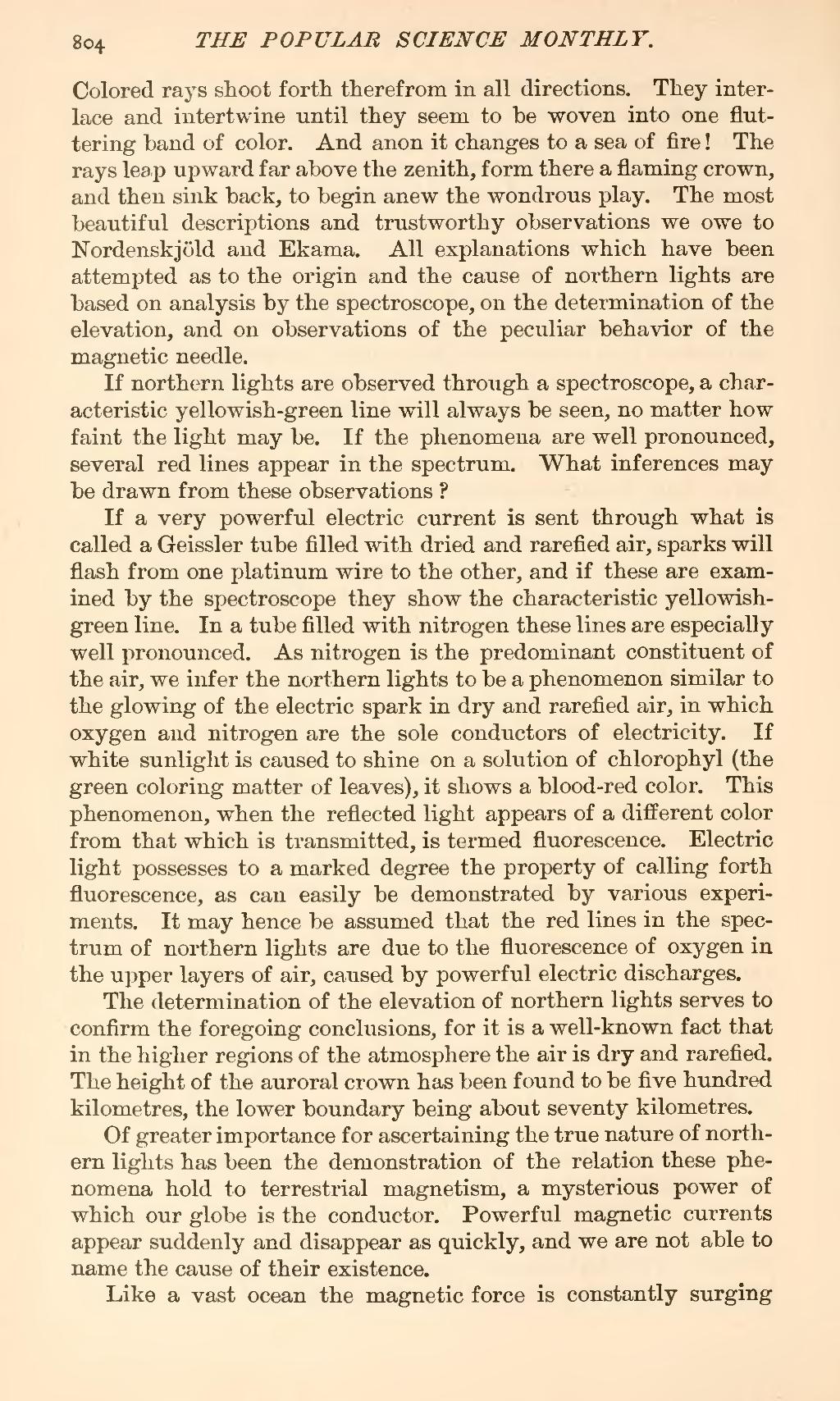Colored rays shoot forth therefrom in all directions. They interlace and intertwine until they seem to be woven into one fluttering band of color. And anon it changes to a sea of fire! The rays leap upward far above the zenith, form there a flaming crown, and then sink back, to begin anew the wondrous play. The most beautiful descriptions and trustworthy observations we owe to Nordenskjöld and Ekama. All explanations which have been attempted as to the origin and the cause of northern lights are based on analysis by the spectroscope, on the determination of the elevation, and on observations of the peculiar behavior of the magnetic needle.
If northern lights are observed through a spectroscope, a characteristic yellowish-green line will always be seen, no matter how faint the light may be. If the phenomena are well pronounced, several red lines appear in the spectrum. What inferences may be drawn from these observations?
If a very powerful electric current is sent through what is called a Geissler tube filled with dried and rarefied air, sparks will flash from one platinum wire to the other, and if these are examined by the spectroscope they show the characteristic yellowish-green line. In a tube filled with nitrogen these lines are especially well pronounced. As nitrogen is the predominant constituent of the air, we infer the northern lights to be a phenomenon similar to the glowing of the electric spark in dry and rarefied air, in which oxygen and nitrogen are the sole conductors of electricity. If white sunlight is caused to shine on a solution of chlorophyl (the green coloring matter of leaves), it shows a blood-red color. This phenomenon, when the reflected light appears of a different color from that which is transmitted, is termed fluorescence. Electric light possesses to a marked degree the property of calling forth fluorescence, as can easily be demonstrated by various experiments. It may hence be assumed that the red lines in the spectrum of northern lights are due to the fluorescence of oxygen in the upper layers of air, caused by powerful electric discharges.
The determination of the elevation of northern lights serves to confirm the foregoing conclusions, for it is a well-known fact that in the higher regions of the atmosphere the air is dry and rarefied. The height of the auroral crown has been found to be five hundred kilometres, the lower boundary being about seventy kilometres.
Of greater importance for ascertaining the true nature of northern lights has been the demonstration of the relation these phenomena hold to terrestrial magnetism, a mysterious power of which our globe is the conductor. Powerful magnetic currents appear suddenly and disappear as quickly, and we are not able to name the cause of their existence.
Like a vast ocean the magnetic force is constantly surging

